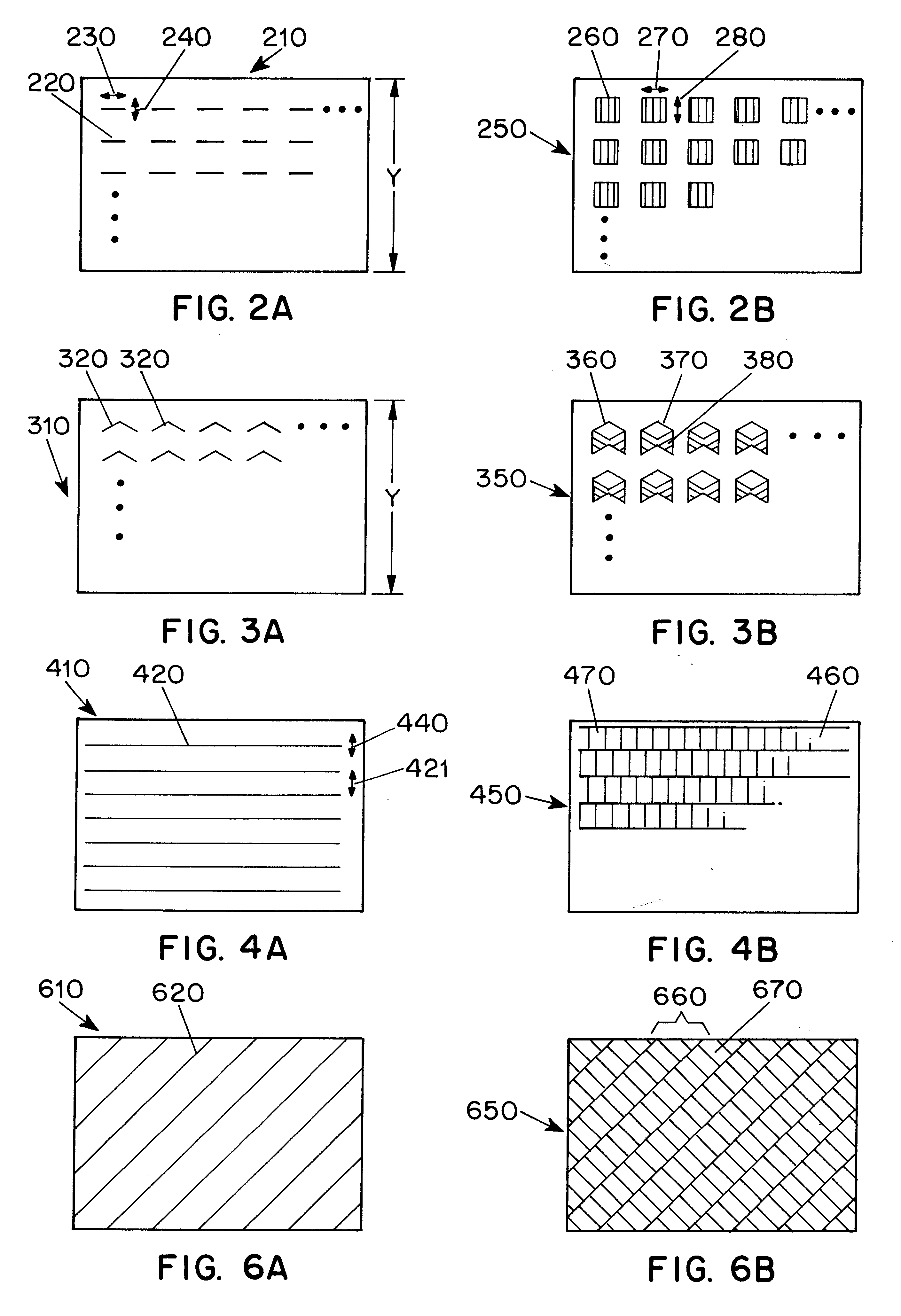Methods for producing uniform large-grained and grain boundary location manipulated polycrystalline thin film semiconductors using sequential lateral solidification
a polycrystalline thin film, grain boundary location technology, applied in the direction of photomechanical equipment, instruments, manufacturing tools, etc., can solve the problems of poor and non-uniform devices, low manufacturing yield, and difficulty in generating polycrystalline silicon by conventional excimer laser annealing technology
- Summary
- Abstract
- Description
- Claims
- Application Information
AI Technical Summary
Benefits of technology
Problems solved by technology
Method used
Image
Examples
first embodiment
Referring to FIGS. 2a and b, the present invention will now be described. FIG. 2a illustrates a mask 210 incorporating a pattern of slits 220. The mask 210 is preferably fabricated from a quartz substrate, and includes either a metallic or dielectric coating which is etched by conventional techniques to form a mask pattern, such as that shown in FIG. 2a. Each slit 220 is of a breadth 230 which is chosen in accordance with the necessary dimensionality of the device that will be fabricated on the sample 170 in the particular location that corresponds to the slit 220. For example, the slits 220 should be approximately 25 micrometers across to fabricate a 25 micrometer semiconductor device, or in the case of a multi-part device, a channel in a device, in sample 170. The width 240 of the slit 220 is preferably between approximately two and five micrometers in order to be small enough to avoid nucleation in sample 170 and large enough to maximize lateral crystal growth for each excimer pu...
second embodiment
Referring next to FIGS. 3a and b, the present invention will now be described. FIG. 3a illustrates a mask 310 incorporating a pattern of chevrons 320. The breadth 320 of each chevron side will determine the size of the ultimate single crystal region to be formed in sample 170. When the sample 170 is translated in the Y direction and mask 310 is used in masking system 150, a processed sample 350 having crystallized regions 360 is produced, as shown in FIG. 3b. Each crystal region 360 will consist of a diamond shaped single crystal region 370 and two long grained, directionally controlled polycrystalline silicon regions 380 in the tails of each chevron.
While the embodiments described with reference to FIGS. 2 and 3 are advantageous to generate spatially separated devices on silicon sample 170, at least some of the silicon sample 170 is not utilized in the final semiconductor. In order to facilitate a more flexible configuration of devices that can be developed on the semiconductor sam...
third embodiment
Referring to FIGS. 4a and b, the present invention will now be described. FIG. 4a illustrates a mask 410 incorporating a pattern of slits 410. Each slit 410 should extend as far across on the mask as the homogenized laser beam 149 incident on the mask permits, and must have a width 440 that is sufficiently narrow to prevent any nucleation from taking place in the irradiated region of sample 170. The width 440 will depend on a number of factors, including the energy density of the incident laser pulse, the duration of the incident laser pulse, the thickness of the silicon thin film sample, and the temperature and conductivity of the silicon substrate. For example, the slit should not be more than 2 micrometers wide when a 500 Angstrom film is to be irradiated at room temperature with a lascr pulse of 30 ns and having an energy density that slightly exceeds the complete melt threshold of the sample.
When the sample 170 is translated in the Y direction and mask 410 is used in masking sy...
PUM
| Property | Measurement | Unit |
|---|---|---|
| width | aaaaa | aaaaa |
| width | aaaaa | aaaaa |
| width | aaaaa | aaaaa |
Abstract
Description
Claims
Application Information
 Login to View More
Login to View More - R&D
- Intellectual Property
- Life Sciences
- Materials
- Tech Scout
- Unparalleled Data Quality
- Higher Quality Content
- 60% Fewer Hallucinations
Browse by: Latest US Patents, China's latest patents, Technical Efficacy Thesaurus, Application Domain, Technology Topic, Popular Technical Reports.
© 2025 PatSnap. All rights reserved.Legal|Privacy policy|Modern Slavery Act Transparency Statement|Sitemap|About US| Contact US: help@patsnap.com



